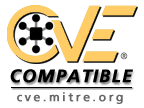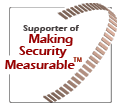Uncontrolled Search Path Element |
| Weakness ID: 427 (Weakness Base) | Status: Draft |
Description Summary
Extended Description
Although this weakness can occur with any type of resource, it is frequently introduced when a product uses a directory search path to find executables or code libraries, but the path contains a directory that can be modified by an attacker, such as "/tmp" or the current working directory.
| Reference | Description |
|---|---|
| CVE-2002-1576 | |
| CVE-1999-1461 | |
| CVE-1999-1318 | |
| CVE-2003-0579 | |
| CVE-2000-0854 | |
| CVE-2001-0943 | |
| CVE-2001-0942 | |
| CVE-2001-0507 | |
| CVE-2002-2017 | |
| CVE-1999-0690 | |
| CVE-2001-0912 | Error during packaging causes product to include a hard-coded, non-standard directory in search path. |
| CVE-2001-0289 | Product searches current working directory for configuration file. |
| CVE-2005-1705 | Product searches current working directory for configuration file. |
| CVE-2005-1307 | Product executable other program from current working directory. |
| CVE-2002-2040 | Untrusted path. |
| CVE-2005-2072 | Modification of trusted environment variable leads to untrusted path vulnerability. |
| CVE-2005-1632 | Product searches /tmp for modules before other paths. |
Phase: Architecture and Design Assume all input is malicious. Use a standard input validation mechanism to validate all input for length, type, syntax, and business rules before accepting the data to be displayed or stored. Use an "accept known good" validation strategy. |
Do not rely exclusively on blacklist validation to detect malicious input or to encode output. There are too many variants to encode a character; you're likely to miss some variants. |
Inputs should be decoded and canonicalized to the application's current internal representation before being validated. Make sure that your application does not decode the same input twice. Such errors could be used to bypass whitelist schemes by introducing dangerous inputs after they have been checked. |
| Nature | Type | ID | Name | View(s) this relationship pertains to |
|---|---|---|---|---|
| ChildOf |  Category Category | 417 | Channel and Path Errors | Development Concepts (primary)699 |
| ChildOf |  Weakness Class Weakness Class | 668 | Exposure of Resource to Wrong Sphere | Research Concepts (primary)1000 |
| Mapped Taxonomy Name | Node ID | Fit | Mapped Node Name |
|---|---|---|---|
| PLOVER | Uncontrolled Search Path Element |
| CAPEC-ID | Attack Pattern Name | (CAPEC Version: 1.4) |
|---|---|---|
| 38 | Leveraging/Manipulating Configuration File Search Paths |
| Unlike untrusted search path (CWE-426), which inherently involves control over the definition of a control sphere, this entry concerns a fixed control sphere in which some part of the sphere may be under attacker control. This is not a clean fit under CWE-668 or CWE-610, which suggests that the control sphere model needs enhancement or clarification. |
| Submissions | ||||
|---|---|---|---|---|
| Submission Date | Submitter | Organization | Source | |
| PLOVER | Externally Mined | |||
| Modifications | ||||
| Modification Date | Modifier | Organization | Source | |
| 2008-07-01 | Eric Dalci | Cigital | External | |
| updated Potential Mitigations, Time of Introduction | ||||
| 2008-09-08 | CWE Content Team | MITRE | Internal | |
| updated Relationships, Observed Example, Other Notes, Taxonomy Mappings | ||||
| 2009-07-27 | CWE Content Team | MITRE | Internal | |
| updated Description, Maintenance Notes, Observed Examples, Other Notes, Potential Mitigations, Relationships | ||||





